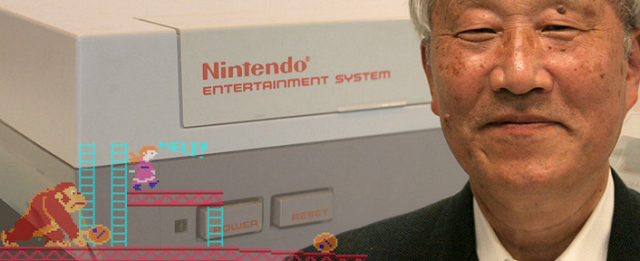
Dear Reader:
Famicom/NES designer on the creation of the controller, players enjoying glitches/bugs
A portion of a USgamer interview with Famicom/NES designer, Masayuki Uemura...

"There were, as you can probably imagine, a lot of difficulties we faced in doing things for the first time in building this hardware, but one of the most difficult was, 'What shape and layout will the controller have?'
This has a touch of coincidence about it, too, but some of those people who had gone to work with Gunpei Yokoi’s team eventually found their way back to our team. So one of the ideas that came up because of that was, 'Well, we’ve got this Game & Watch multi-screen Donkey Kong that uses the controller format of a plus control pad and buttons.' So we hooked that up and got it working.
At the time, we were prototyping various ideas for the Famicom hardware, as well as controllers. When we took this idea that had been used for controls with the Donkey Kong Game & Watch and got it working on the Famicom prototype with that same style of controls, we immediately knew, 'OK, this feels right; there’s something good about this.' That means that there are actually a few people who can claim that they invented the controller for the Famicom!
I think that the biggest reason that we liked the controls this way was just how good the original Game & Watch Donkey Kong, which was on multi-screen, felt. To expand on that a little further, with this prototype... the multi-screen format of the Donkey Kong Game & Watch means that you have a screen on top and a screen on the bottom, with the controls down below. When we hooked up the prototype, it meant that you were no longer looking down there [at the controls], but up here [at the screen]. Yet we suddenly realized, kind of mysteriously, that you didn’t need to look at the controls while you were playing the game, and it still felt right!
And up to that point, we had tried a big variety of control styles and they had all had some sort of something that didn’t feel quite right about them, but this was something that no matter who tried it on our team, they could tell right away that this worked. So that’s when I decided to put my foot down and make the call that this is what we would be going with.
I may have made the decision, but in the end, it’s something that whoever worked on the Game & Watch for Donkey Kong had a hand in, whoever brought the idea to try out the prototype had a hand in it—it was really a team effort."
Uemura did mention one regret to the design of the NES' controller, but it relates to ownership instead of design...
"You know, we didn’t patent that technology at the time. Once it was established, you kind of started to see it pop up everywhere, and now it’s kind of become a standard for controls in games."
Uemura also touched upon the idea of people exploting bugs/glitches in NES games. It seems that Uemura really likes when players try out these experiments, and laments that games today make sure to squeeze out all of those potential issues.
"With games being more established today, in many cases, bugs like the ones I’m talking about from that era have been ironed out of the system in a lot of ways. I think that's a bit unfortunate, because it takes a bit away from that sense of discovery. At that time, when we would bring the games to America a lot of times, we would have the time to remove some of those bugs from the time when the game first came out in Japan.
Maybe that's something about the culture of play in Japan—the idea of getting every ounce of enjoyment out of whatever it is you’re playing. If that means finding every possible way to use whatever it is that you’re playing with, there may have been something about the joy of finding bugs and using them to your advantage.
That's something that made me chuckle as a designer, once we knew people were doing this. It was fun to know that people were out there using this thing that we had made in these ways we hadn’t imagined. I have a feeling that this was something really important to the gaming culture, and that the kind of connectivity that people felt at the time was this discovery of bugs and stuff. The fact that has kind of disappeared from games today is something I find a bit unfortunate.
I’m not saying that things like problems with certain games that came out for Atari systems, where the game would have a bug where it wouldn’t work—that’s not good. But as long as the game itself is working the way it’s intended, if there are fun little exploits and tricks people can find in there, that’s the type of thing I’m talking about."
